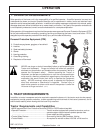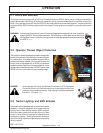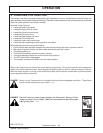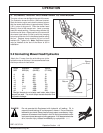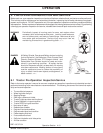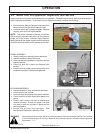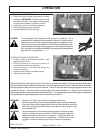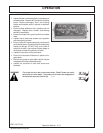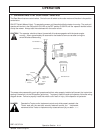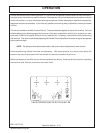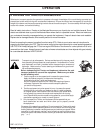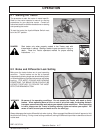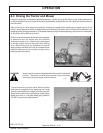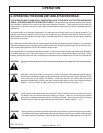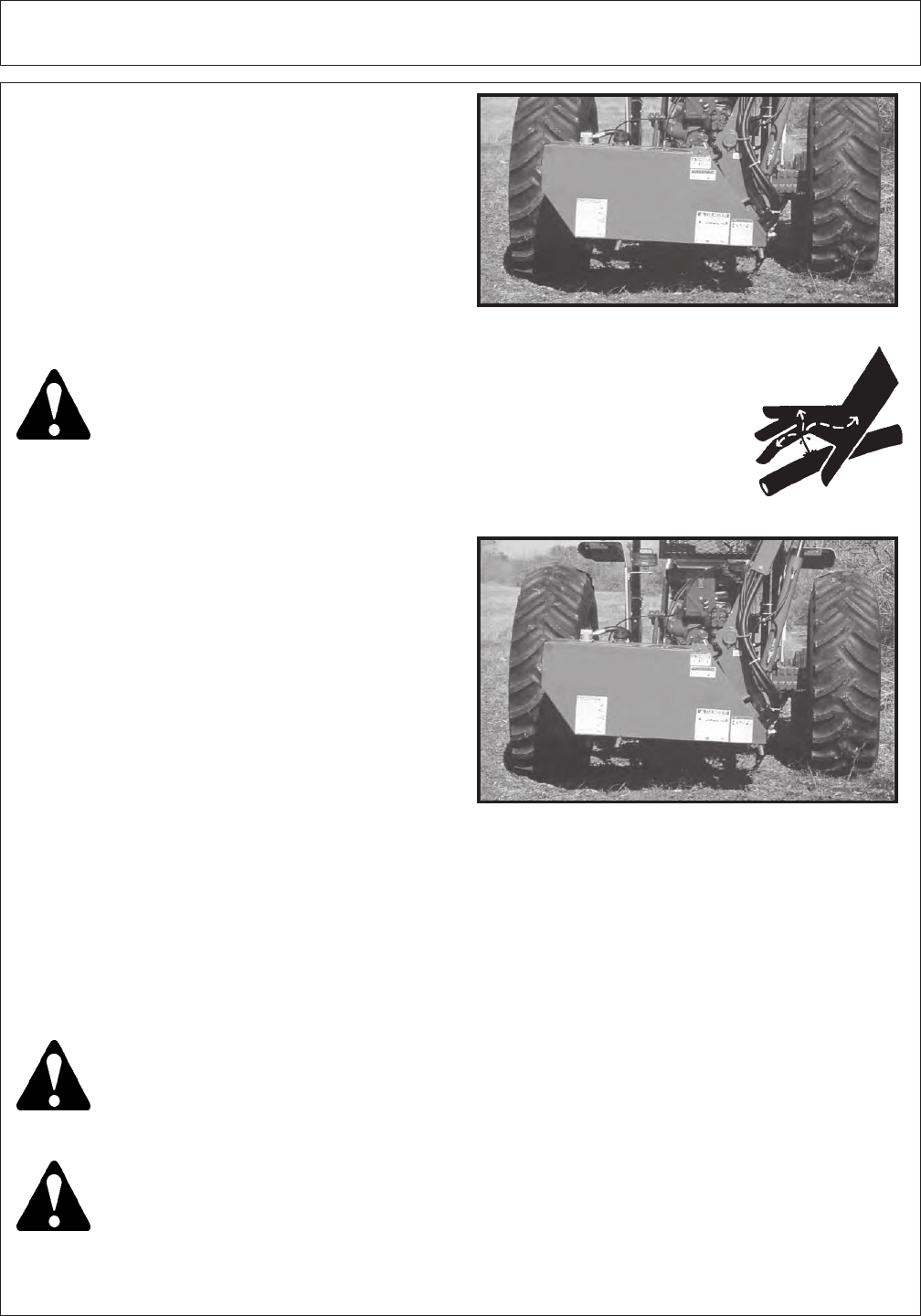
Operation Section 4-12
OPERATION
RBF-19C 07/04
© 2004 Alamo Group Inc.
HYDRAULIC PUMP/OIL RESERVOIR
¾ Check oil reservoir level and oil condition. (Add
specific type oil if low)
¾ Change hydraulic oil filter and hydraulic oil
according to maintenance schedule.
¾ Ensure there are no oil leaks and fittings are
properly connected.
¾ Inspect overall condition of hydraulic pump.
¾ Inspect pump driveshaft.
HYDRAULIC LINE INSPECTION
¾ Check for hydraulic leaks along hoses, cylinders
and fittings. IMPORTANT: DO NOT use your hands
to check for oil leaks. Use a piece of heavy paper
or cardboard to check for hydraulic oil leaks.
¾ Inspect the condition of the valve weldment.
¾ Ensure fitting are properly connected
¾ Inspect condition of nylon bushings.
DANGER!
Do not operate this Equipment with hydraulic oil leaking. Oil is
expensive and its presence could present a hazard. Do not check for
leaks with your hand! Use a piece of heavy paper or cardboard. High-
pressure oil streams from breaks in the line could penetrate the skin
and cause tissue damage including gangrene. If oil does penetrate the
skin, have the injury treated immediately by a physician knowledgeable
and skilled in this procedure. (SG-15)
WARNING!
WARNING!
Avoid contact with hot surfaces including hydraulic oil tanks, pumps,
motors, valves and hose connections. Relieve hydraulic pressure
before performing maintenance or repairs. Use gloves and eye
protection when servicing hot components. Contact with a hot
surface or fluid can cause serious injury from burns or scalding.
(SG-34)
Attention: Oil Filter Cap is also the Pressure Relief Cap.
Remove cap slowly to relieve pressure before removing cap completely.
Stay clear to prevent being scalded with hot oil that may spray out of the
tank that is still pressurized and may cause serious injury to eyes, face,
and exposed skin.
Check the fluid level in the Hydraulic Tank on the Tractor, and add oil if required. As the air has been forced out of
the Cylinders and Hoses, it goes into the Hydraulic Tank and reduces the volume of oil. Maintain the oil level within
the sight gauge located on the side of the reservoir. Never fill the tank above the sight gauge to allow for the
expansion of the oil. The tank maintains pressure after the mower has been run. Stand off to one side when
removing the breather cap element to prevent possible injury. To relieve pressure remove the breather cap element
and depress the spring loaded pressure valve to release any excess air.



